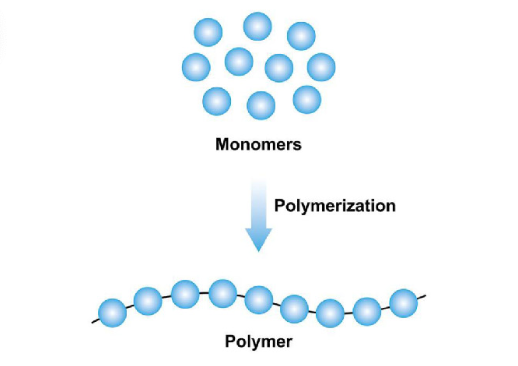Which Garage Door Seal is Better: Brush or Vinyl?
Posted by Action Direct on 25th Aug 2023
Sealing your garage or other entry points is crucial to protect against the elements, dust, dirt, and unwanted pests. As you research what’s best to seal your garage, the amount of information out there can get overwhelming—especially when it comes to choosing between brush seals and vinyl seals. Both offer unique benefits, which is why Action Direct has put together this guide to help you choose the best weatherstripping for your needs and budget.
We carry top-quality weather seals manufactured in America by Action Industries. Their meticulous manufacturing process ensures you get the best weather seals on the market.
Why Do You Need Weather Seals?
If you’ve ever felt a draft blowing around the edges of a closed door, you know being shut isn’t the same as being sealed. Small openings in doors and entry points allow air, pests, and debris to infiltrate. The "chimney effect" causes hot air to rise and escape through the top, while cold air enters through gaps at the bottom. This forces HVAC systems to work harder, raising energy bills.
Weather seals create a barrier to shut out these elements. They are especially helpful in areas affected by wildfires or poor air quality.
How Effective Are Brush and Vinyl Seals?
Action Direct offers weather seals from Action Industries that stop up to 99% of air infiltration.

What Parts of an Entry Point Should Be Sealed?
For full protection, seal the top, sides, and bottom of your door. The door jamb refers to the vertical sides. Installing top seals, side seals (jamb seals), and bottom seals ensures your garage stays dry, clean, and pest-free.
What Is the Difference Between Brush Seals and Vinyl Seals?
Brush and vinyl seals use different materials:
-
Vinyl seals are made of PVC, offer more color choices, and are more affordable. They look better and are DIY-friendly.
-
Brush seals are extremely durable and offer superior performance, especially for commercial uses. However, they are less visually appealing and come in fewer colors.
Best Weather Seals for a Residential Garage Door

Coiled DuraSeal Garage Door Jamb Seal Weather Seal
Homeowners who prioritize aesthetics often choose DuraSeal vinyl seals. They’re available in colors like white, grey, black, sandstone, and almond. They look like wood but won’t rot or crack. Made of rigid foamed PVC with a flexible PVC fin, they conform to surfaces and hold their shape in extreme temperatures.
Vinyl is one of the most widely used plastics because of its flexibility, moisture resistance, and affordability.

Sealing the Sides and Top of a Residential Garage Door
Use vinyl stop molding seals like DuraSeal. They ship coiled to reduce cost and prevent damage. They’re easy to install and ideal for DIYers.
Sealing the Bottom of a Residential Garage Door
Standard vinyl bottom seals work well for most climates. In extreme temperatures, upgrade to an EPDM seal, which won’t crack or stick and lasts longer. EPDM only comes in black.
For a DIY-friendly solution, try the EZ Zip bottom seal by Action Industries. It combines the bottom seal and retainer into one easy-to-install piece. It’s coiled for affordable shipping.
EPDM Weather Seals
EPDM (ethylene propylene diene monomer) is a synthetic rubber that withstands -50 to 300°F. It’s waterproof, low maintenance, and resists UV rays and ozone. EPDM is ideal for commercial and industrial use.
Best Weather Seals for a Commercial or Light Industrial Garage Door

Brush Seals
Brush seals are more effective than vinyl at reducing air infiltration—up to three times more. Their soft bristles won’t scratch surfaces and are great for irregular gaps, dock levelers, conveyors, and rolling doors.
Sealing the Sides and Top of a Commercial Garage Door
Brush seals, made with durable polypropylene bristles, don’t freeze or stick in the cold. For maximum protection, consider the WeatherBLOCK seal, which combines a brush and an EPDM insert.
Sealing the Bottom of a Commercial Garage Door
Use a vinyl or EPDM seal instead of brush seal on the bottom. Brush seals don’t block water as effectively. EPDM bottom seals are best for commercial use.
How to Install a Garage Door Brush Seal
Action Direct offers brush seal kits from Action Industries with easy instructions:
-
Measure the header of the door.
-
Lay out the retainers and mark the length.
-
Cut the retainer and remove extra brush.
-
Mount top retainers using the provided screws.
-
Measure and trim for the first side, then install.
-
Repeat for the remaining side.
Where to Find the Right Weather Seal
Action Direct offers a wide selection of vinyl and brush seals. Our seal kits include everything you need for easy DIY or commercial installation.
Need More Information About Brush or Vinyl Seals?
Still unsure which seal is right for you? Contact our expert team today.
